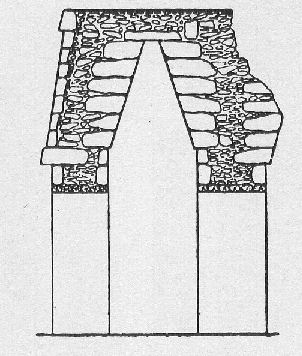Construction Methods
The Maya built using fairly simple and rustic tools made of stone. The basic building pattern for every building was the same: first a pile of rubble would be built up to provide bulk, which would then be encased in a stone facing, which would hold the rubble in place. This process could be more or less sophisticated, for instance, sometimes an intermediate layer of tightly fitted stone would be built around the rubble pile before the facing was added, or a thin "veneer" of stone would be added over the facing as a finish. In many cases the buildings were then stuccoed and almost certainly painted, but in most cases this stucco has not survived.
When the time came to build over the top of an existing pyramid, the process was basically the same, although rubble would rarely be added unless some kind of gap or pocket was being filled in.

An example of four fold symmetry in pyramids.

The Maya did not build arches the way European did, with each block leaning into the next and held up by a keystone at the top. Instead, they used a technique called corbelling, in which each block rests on top of the next but is drawn slightly toward the center until the two sides meet. These blocks were then frequently shaved off to form a triangle. The photo shows the arch without further dressing of the stone.

This line drawing shows the process of moving each layer further toward the center.